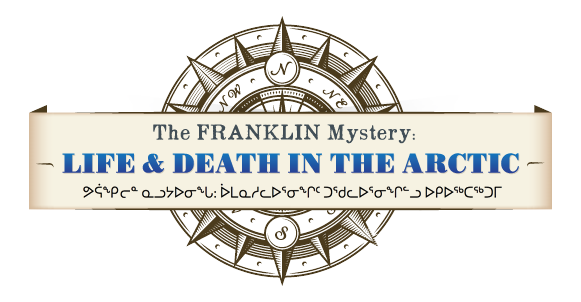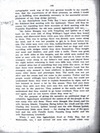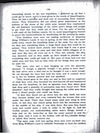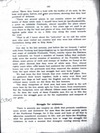Iggiarâjuk's Testimony on the Franklin Party [Reported by Knud Rasmussen] (1931)
In my descriptions from Pelly Bay I have already referred to the Eskimos' first meeting with the Qablunait. There will thus be reason for repeating here their accounts of their meeting with the Franklin Expedition. An old man named Iggiarârjuk told me:
"My father Mangaq was with Tetqatsaq and Qablut on a seal hunt on the west side of King William's Land when they heard shouts, and discovered three white men who stood on the shore waving to them. This was in spring; there was already open water along the land, and it was not possible to get in to them before low tide. The white men were very thin, hollow-cheeked, and looked ill. They were dressed in white man's clothes, had no dogs and were travelling with sledges which they drew themselves. They bought seal meat and blubber, and paid with a knife. There was great joy on both sides at this bargain, and the white men cooked the meat at once with the aid of the blubber, and ate it. Later on the strangers went along to my father's tent camp before returning to their own little tent, which was not of animal skins but of something that was white like snow. At that time there were already caribou on King William's Land, but the strangers only seemed to hunt wildfowl; in particular there were many eider ducks and ptarmigan then. The earth was not yet alive and the swans had not come to the country. Father and his people would willingly have helped the white men, but could not understand them; they tried to explain themselves by signs, and in fact learned to know a lot by this means. They had once been many, they said; now they were only few, and they had left their ship out in the pack-ice. They pointed to the south, and it was understood that they wanted to go home overland. They were not met again, and no one knows where they went to."
For the purpose of giving his narrative an additional tinge of reliability Iggiarârjuk mentioned the names of all the people at the tent camp who met them. There were Mangak (the tease), and his wife Qerneq (black), Tetqataq (flying before the wind) and his wife Ukaliaq (the leveret), Qablut (scoop) and his wife Iliuana (point), Ukuarârssuk (little snow block – for closing the door of the snow hut) and his wife Putulik (hole), Panatôq (long knife) and his wife Equvautsoq (crooked).
When I met him Iggiarârjuk lived at Pelly Bay, but at Malerualik, too, I met several old men who could relate very interesting details of the lost expedition. I gathered up all that I could get to know, and it is here given in the words of Qaqortingneq. They all had a peculiar and droll way of recounting these reminiscences. They themselves did not attach great importance to the sadness of the doom of the white men; instead they emphasized the old Eskimos' knowledge of the white men's things and sought to get what fun they could out of them. For the sake of brevity I will omit all the Eskimo names; for as usual Qaqortingneq wanted to prove his trustworthiness by mentioning all the persons by name.
"Two brothers were once out sealing northwest of Qeqertaq (King William's Land). It was in spring, at the time when the snow melts away round the breathing holes of the seals. Far out on the ice they saw something black, a large black mass that could be no animal. They looked more closely and found that it was a great ship. They ran home at once and told their fellow-villagers of it, and next day they all went out to it. They saw nobody, the ship was deserted, and so they made up their minds to plunder it of everything they could get hold of. But none of them had ever met white men, and they had no idea what all the things they saw could be used for.
"One man, who saw a boat hanging over the gunwale, shouted: "A trough, a gigantic trough! I am going to have that!" He had never seen a boat and so he thought it was a meat trough. He cut through the lines that held the boat, and it crashed down on the ice bottom upward and was smashed.
"They found guns in the ship, too, and as they had no suspicion of what they were, they knocked the steel barrels off and hammered them out for harpoons. In fact, so ignorant were they about guns that they said a quantity of percussion caps they found were "little thimbles", and they really thought that among the white men there lived a dwarf people who could use them.
"At first they dared not go down into the ship itself, but soon they became bolder and even ventured into the houses that were under the deck. There they found many dead men lying in their beds. At last they also risked going down into the enormous room in the middle of the ship. It was dark there. But soon they found tools and would make a hole in order to let light in. And the foolish people, not understanding white man's things, hewed a hole just on the water-line so the water poured in and the ship sank. And it went to the bottom with all the valuable things, of which they barely rescued any.
"The same year, well into the spring, three men were on their way from King William's Land to Adelaide Peninsula to hunt for caribou calves. There they found a boat with the bodies of six men. In the boat were guns, knives and some provisions, showing that they had perished of sickness.
"There are several places in our country where we still see bones of these white men. I myself have been at Qavdlunârsiorfik, a point on the Adelaide Peninsula, almost opposite the place where Amundsen wintered; up to only a few years ago we used to go over there to dig for lead and pieces of iron. And there is Kangerarfigdluk quite close to us, a little way along the coast towards the west.
"That is all I know about the 'pelrartut' as we call the white men who once visited our country and who were lost without our forefathers being able to help them."
- - -
One day in the late autumn, just before the ice formed, I sailed with Peter Norberg and Qaqortingneq up to Qavdlunârsiorfik on the east coast of Adelaide Peninsula. There, exactly where the Eskimos had indicated, we found a number of human bones that undoubtedly were the mortal remains of members of the Franklin Expedition; some pieces of cloth and stumps of leather we found at the same place showed that they were of white men. Now, almost eighty years after, wild beasts had scattered the white, sun-bleached bones out over the peninsula and thus removed the sinister traces from the spot where the last struggle had once been fought.
We had been the first friends that ever visited the place. Now we gathered their bones together, built a cairn over them and hoisted two flags at half mast, the English and the Danish. Thus without many words we did them the last honours.
The deep footprints of tired men had once ended in the soft snow here by the low, sandy spit, far from home, from countrymen. But the footprints were not effaced. Others came and carried them on. So does the work of these Franklin men live on to this day wherever the struggle goes on for the exploration and conquest of our globe.





